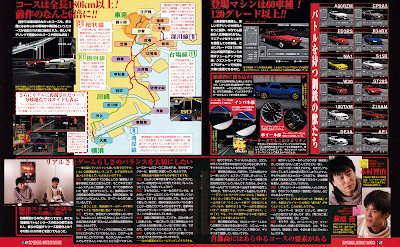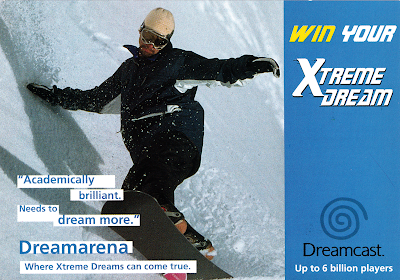For the sake of fitting an awful pun into this article's title, I've decided to call those little bits of paper whose purpose is to crassly shill a product or service, 'flyers'. Around these parts I believe the more commonly used term is 'leaflet', although I suspect folks on either side of the pond (and indeed elsewhere in the Anglosphere) will know what is being referred to regardless of which term is employed. Flyer, leaflet, handbill, pamphlet, handout, circular; why there are so many synonyms beats me.
Regardless of linguistic preferences though, the purpose of these objects in angling for sales is all the same, as is the typical end result. After being thrust into your hand on the street by a weary-eyed distributor, or unceremoniously jammed through your letterbox, most flyers are dumped straight in the (recycling) bin, perhaps after being afforded a brief glance if they are lucky. After all, once they have conveyed their message to the reader their primary purpose has been fulfilled. Fortunately though for geeks like us, a hefty crop of Dreamcast flyers have managed to survive the perils of the last 20 years and are safely tucked away in private collections. Of course, keeping a hold of printed material like this isn't a sign of deviant hoarding instincts. Oh no, this is all about curating a collection and preserving precious artefacts.
Ok, ok, calling a pre-order form for Sega Bass Fishing a precious artefact might be an egregious bastardisation of the English language. However, it wouldn't be unreasonable to presume that flyers may hold some kind of value that makes them worthy of preservation - whether that be to hobby enthusiasts with a penchant for oddities, or folks undertaking more serious research into video game history. Therefore in the interests of appeasing these pressing needs, I've recently scanned and uploaded around 20 or so Dreamcast flyers for your viewing pleasure.
What follows is a full list of the haul, with titles hyperlinked to PDF files hosted over at the virtual Aladdin's den that is Sega Retro. Scribblings on some of the more noteworthy pieces can also be found below the list for our hardier readers…
- @barai Eternal Arcadia (4 pages, Japan, 2000)
- DeeDee Planet (2 pages, Japan, 2000)
- Dreamarena Xtreme Dream competition postcard (double-sided, UK, 2000)
- Dreamcast Karaoke (2 pages, Japan, 2001)
- Dreamcast E3 postcard (double-sided, USA, 1999)
- Dreamcast launch (6 pages, Japan, 1998)
- Dreamcast launch feat. Hidekazu Yukawa (1 page, Japan, 1998)
- Dreamcast launch postcard (double-sided, Spain, 1999)
- Dreamcast-Scene.com and Wind & Water Puzzle Battles (double-sided, Germany, 2008)
- Dreameye (4 pages, Japan, 2000)
- Evolution (quad-fold A4, Japan, 1998)
- Garou: Mark of the Wolves postcard (Japan, 2001)
- Grandia II (quad-fold A4, Japan, 2000)
- Maken X (tri-fold A4, Japan, 1999)
- Phantasy Star Online (tri-fold A4, Japan, 2000)
- Rainbow Six: Rogue Spear competition postcard (double-sided, UK, 2001)
- Record of Lodoss War postcard (double-sided, UK, 2000)
- Roadsters (2 pages, UK, 2000)
- Sega Bass Fishing (2 pages, UK, 1999)
- Shutoko Battle 2 (8 pages, Japan, 2000)
- Space Channel 5 postcard (double-sided, US, 2000)
- Speed Devils (2 pages, Japan, 1999)
- WAO! Sega WAO! (6 pages, Japan, 2000)
Genki Show-off the Goods
 |
| That's an awful lot of copy squeezed into a two-page spread! Here Genki seem to be hoping that readers will gaup in awe at the length of their race track and the selection of souped-up cars on offer. |
The marketers at Sega and Genki evidently felt that Shutoko Battle 2 (Tokyo Highway Challenge 2 in PAL regions) warranted more space than usual to flaunt it's red-hot features, shelving the typical flyer format for an 8 page 'Special Guide Book'. As to be expected, the piece delves into hyperbolic detail about the game's graphical improvements, enlarged track and various modes, but also includes an interesting little interview with two of the developers, Tomo Kimura and Tsutomu Hagiwara. Props to Mr Kimura for rocking that mullet in the year 2000 - a brave move that is worthy of our upmost respect.
Wao? Yes, WAO!
 |
| Apologies for the bodged centre-fold where two pages meet. Despite this I wanted to exhibit this two-page art piece in all it's glory. The PDF linked to above provides a much higher quality view. |
Given the peculiar font used, at first glance I assumed the 'WAO!' emblazoned all over this flyer was a brand name of some sort. That stylised 'O' is definitely supposed to be something other than just a letter, but I haven't the foggiest what (answers in the comments please). After digging a little further though, I discovered that 'wao' appears to just roughly translate to 'wow', and Sega are suggesting that customers would be 'wowed' by the cornucopia of internet services available via the Dreamcast. Many of the features shown, such as video-chatting via the Dreameye and on-demand downloads of Mega Drive and PC Engine classics, as fleeting as they may have been, did in fact exist. Others, such as the chance to get a medical check-up via your Dreamcast (a horrendous idea with dystopian undertones), never came to pass. In any case, the distinctive art style shown on the inner pages is quite endearing and the flyer shows how ambitious Sega were with their vision for the expansive role that the Dreamcast would play in domestic settings.
High Hopes for @barai
 |
| The @barai concept explained via cartoon strip, complete with FAQ. |
@barai was one of many innovative concepts that was put into practice for the Dreamcast. As advertised and explained in this flyer, @barai versions only allowed players to progress part-way through a game, after which point a digital key needed to be purchased to unlock the full game. These editions sold for a much lower price than regular retail releases, thereby allowing customers to try a game without committing to a big outlay of cash. Sega clearly had hopes that @barai would catch-on, touting the likes of Illbleed and House of the Dead 2 as future releases, but that wasn't to be. Aside from Eternal Arcadia, Hundred Swords was the only other title to actually get the @barai treatment.
Xtreme Dreams
 |
| Did Sega ever really care about my Xtreme Dreams, or did they just want to lure me onto Dreamarena to inflate my dial-up internet bill even further? |
XTREME! I had been blissfully ignorant of the fact that this iteration of the word 'extreme' had seeped over onto our shores, assuming that it was safely contained over in the United States. Alas, as seen here, it reared its head in the title of the 'Xtreme Dream' competition that Sega was operating for Dreamarena users in the year 2000. To enter, Dreamarena users simply had to explain their dream holiday to Sega who would then stump-up the funds to make it a reality for selected lucky winners. Who actually won this competition? Was their holiday in fact 'Xtreme'? Here lies another mystery that should be thrown onto the heaving in-tray of our in-house private investigator, Tom Charnock.
* * *
I'll mercifully wrap things up my ramblings here, but must close out with an obligatory appeal to readers. Who else has curios like these squirreled away in dusty cupboards? Why not scan and share them before they are 'accidentally' scrapped during a spring clean or perish in a mains water leak? Come on, let's be having you!






































